Here are the countries that have avoided the second Covid wave. Ricolfi’s analysis

The deepening of prof. Luca Ricolfi, sociologist and teacher of Data Analysis, on the second wave of Covid and the strategies of the countries, taken from the Hume foundation website
We have all gotten used to using the word "wave" in these long months of the epidemic. The wave of Covid, the first wave, the second wave. I did it too, and I will do it again, because I can't find a different and more suitable word.
But we should stop, or at least realize that it is a very misleading word.
When we say that a wave has come, and that it has submerged the whole world, every country and every continent, we describe the epidemic as an inevitable event, which comes from outside, and which no one can escape.
This, in a certain (absurd) sense, reassures us. It reassures the citizens, because after all "common sickness means joy". And it is even a boon for politicians because it allows them to think, and above all to say: do you see? it happened everywhere, so it's not our fault if it happened here too.
The same fatalism has long been affecting the speeches on the "second wave". We also perceived the second wave as an impending threat, which after all we expected, and which has now arrived on time, all over the world. And therefore also from us. Surveys confirm that, even during the most peaceful moments of the summer, when they tried to convince us that everything was going well, that we were a role model for others, and that we were prepared anyway, even then the majority of citizens a second wave if he was waiting for it, as if it were an inevitable event.
Yet it is not true. There are portions of the world – even the world most similar to us, that of advanced societies, equipped with democratic institutions – in which the second wave has not arrived at all (and sometimes not even the first). What has arrived is not a wave that overwhelms everything and everyone, but a modest increase in deaths (the only reliable indicator in international comparisons), more or less quickly brought under control.
In short, there are countries that have made it, or are doing it, to keep the epidemic under control. Which ones are they? How many are they?
If we consider the 27 most comparable countries (advanced, democratic societies, with Western-type institutions), there are 10 – more than 1 in 3, therefore – that have not undergone a second wave. Four are in Southeast Asia: Japan, South Korea, Taiwan, Hong Kong. Two are in the Northern Hemisphere: Australia and New Zealand. But four are in Europe: Norway, Finland, Denmark, Ireland.
In the former the numbers of the epidemic are minimal, in the latter (European ones) they are very modest (less than a tenth of those of our first wave).
Therefore it is not mandatory to undergo the second wave. Indeed, it could be said that – when it arrives – the wave is the result of decisions, choices, behaviors that a given country adopts and that produce, as a consequence, a surge in infections. The wave does not come from outside, but is produced from within.
But how can you not produce it?
The interesting fact is that, historically (there is now a history of Covid), there has not been a single, unique way to avoid the second wave. The countries that have made it have not implemented all the same countermeasures, except perhaps one: strong restrictions on entry, which unfortunately in Italy have almost always been snubbed, now for economic reasons (otherwise we damage the tourism industry) , now for organizational reasons (how do we do thousands of tampons a day at airports?), now for ideological reasons (landings and reception, the desire not to "discriminate").
For the rest, each of the 10 countries that made it each found their way, which has always consisted in the adoption of a mix of measures, not just one measure. Not only more or less prolonged and severe lockdowns, but mass swabs, tracking apps, Covid-hotel and assisted quarantine, strict compliance with distance in closed environments, general use of masks and glasses, disinfection of surfaces, sanitation and ventilation environments.
Tomas Pueyo, in my opinion by far the most lucid analyst of the pandemic, has christened this approach "swiss cheese strategy", the famous cheese with holes, similar to our gruyere so loved by Topo Gigio. The idea is that, to prevent the wave from forming, a single layer of cheese (read: a particular contrast measure) is not enough, because each layer has holes in which the epidemic can find an opening, but it is necessary to juxtapose them. more than one, so that where one layer fails, one of the following layers can intervene, each with its holes scattered irregularly and randomly. In other words: judged in itself each measure is insufficient and incomplete, but it is the overall package, a sort of multi-layer filter, which must be effective.
That our “Italian cheese” didn't work is beyond doubt, and the second wave – with its long trail of deaths – is there to prove it. It is only to be hoped that among everyone, Government, Regions, citizens, we will become able to put together the layers of our anti-Covid cheese. Otherwise, after producing the second wave, we will be preparing to procure the third.
++++
DEEPENING OF THE DAVID HUME FOUNDATION
In more than one in three countries, there has been no second wave
If in Italy the contagion curve (measured as the ratio between new positives and tested cases) has finally begun a decreasing phase, deaths do not yet seem to have reversed the course. The growth trend is slowing, but the numbers still remain high.
However, it is necessary to look at what has happened in other countries to better assess the evolution of the epidemic in Italy. Have all countries been hit by a second wave or are there those who have managed to keep the epidemic under control?
The only reliable indicator that allows us to make international comparisons is the number of deaths compared to the population. The detection of new cases depends heavily on the different policies adopted on tampons.
An interesting first point to underline is that the epidemic has not raised its head everywhere. Out of 25 countries most comparable to us (advanced societies excluding small-sized countries) 10 have not registered a second wave at all. These are New Zealand, Japan, Australia, South Korea, Hong Kong , Taiwan and four European countries (Ireland, Denmark, Finland and Norway).
Among these there are 6 in which we cannot even speak of the first wave (New Zealand, Japan, Australia, South Korea, Hong Kong and Taiwan).
Two (Israel and Greece), on the other hand, are the countries that recorded very low numbers during the first period and only now have entered an acute phase of the epidemic.
In the remaining 13, the epidemic accelerated in both the first and second phase.
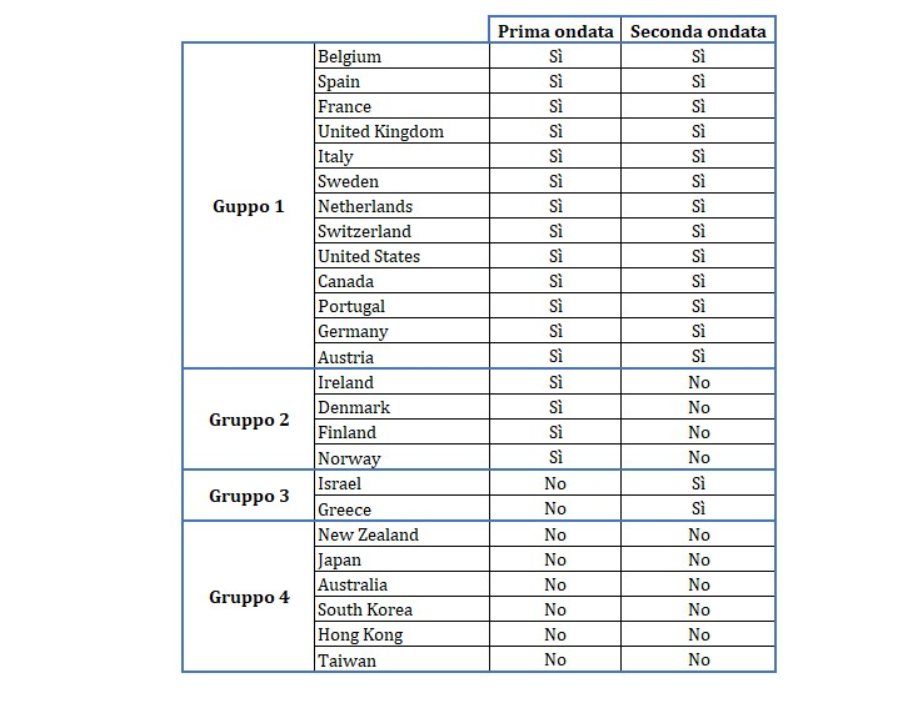
As can be seen from the following graphs, in Switzerland, Austria and Portugal the second wave was even more severe than the first. However, while in Switzerland the curve has returned to point downwards, Austria and Portugal have not yet reversed the trend.
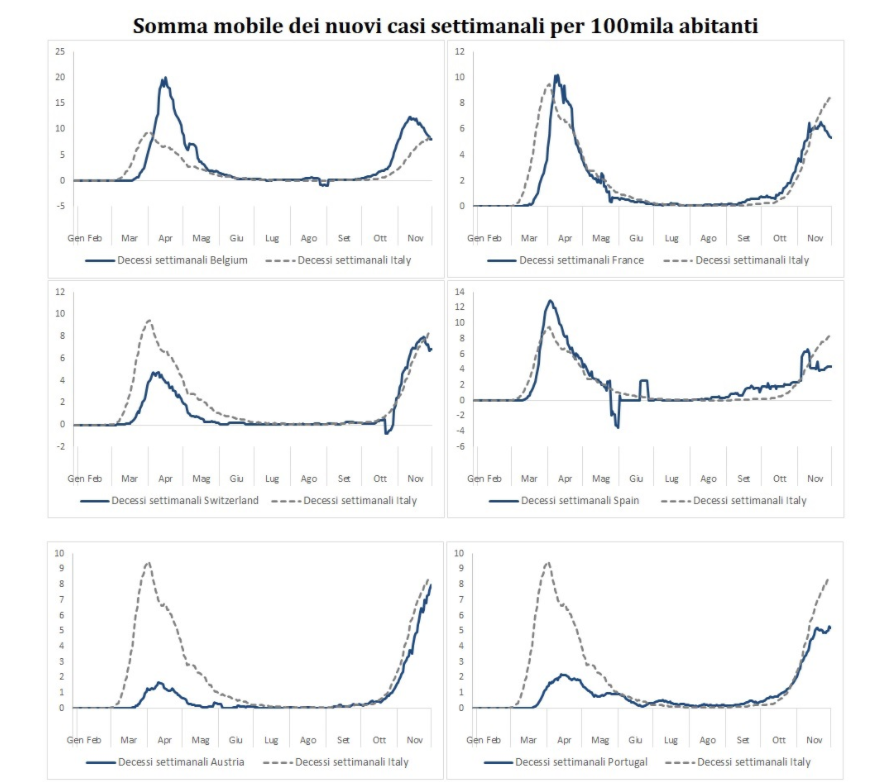
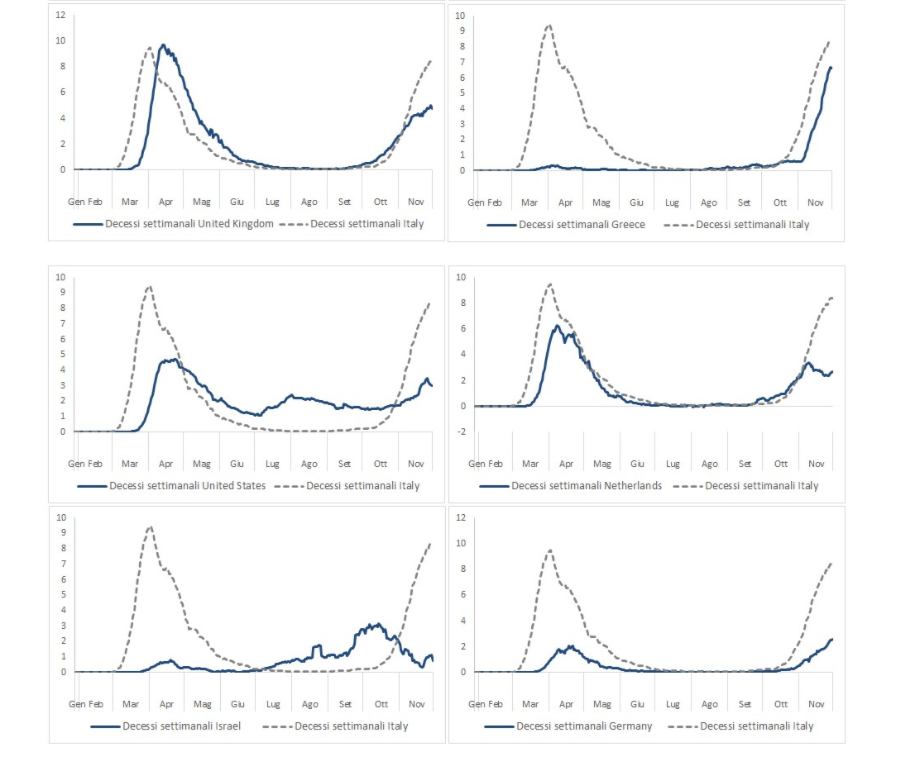
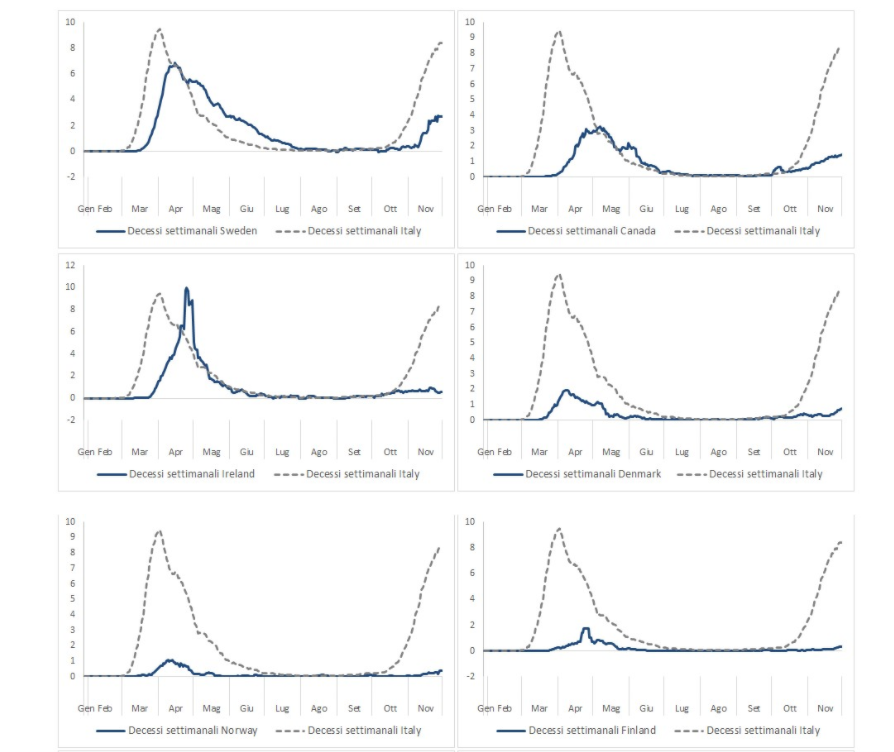
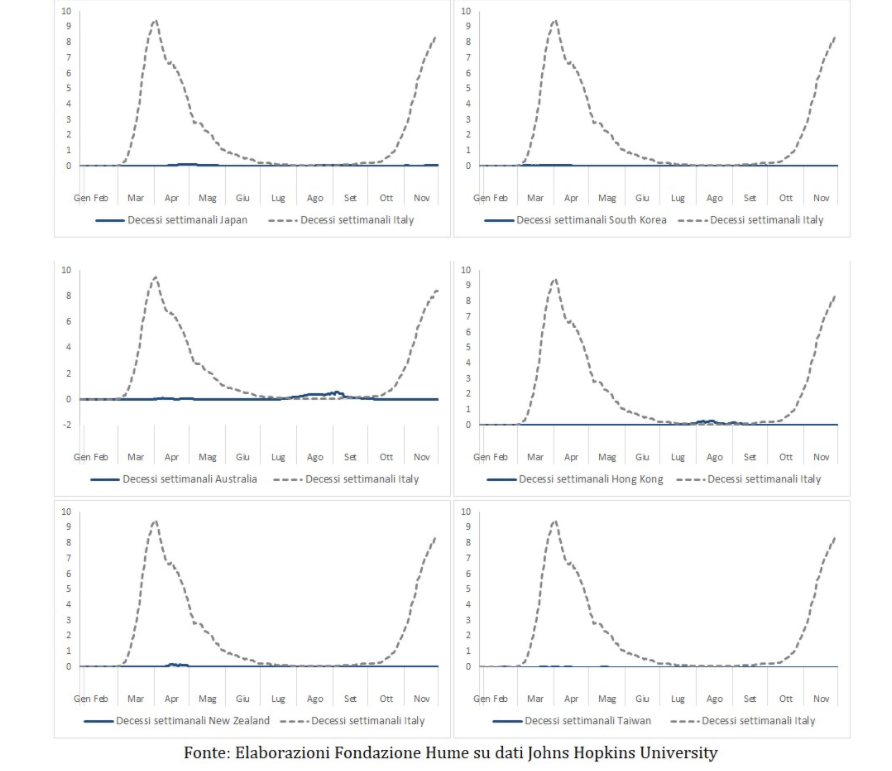
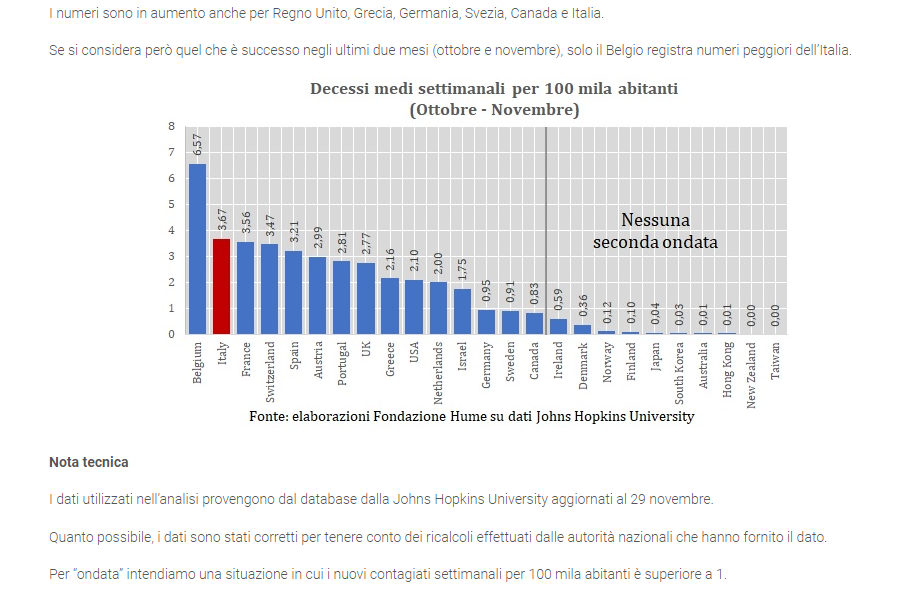
This is a machine translation from Italian language of a post published on Start Magazine at the URL https://www.startmag.it/sanita/ecco-i-paesi-che-hanno-evitato-la-seconda-ondata-covid/ on Sun, 06 Dec 2020 07:35:26 +0000.
